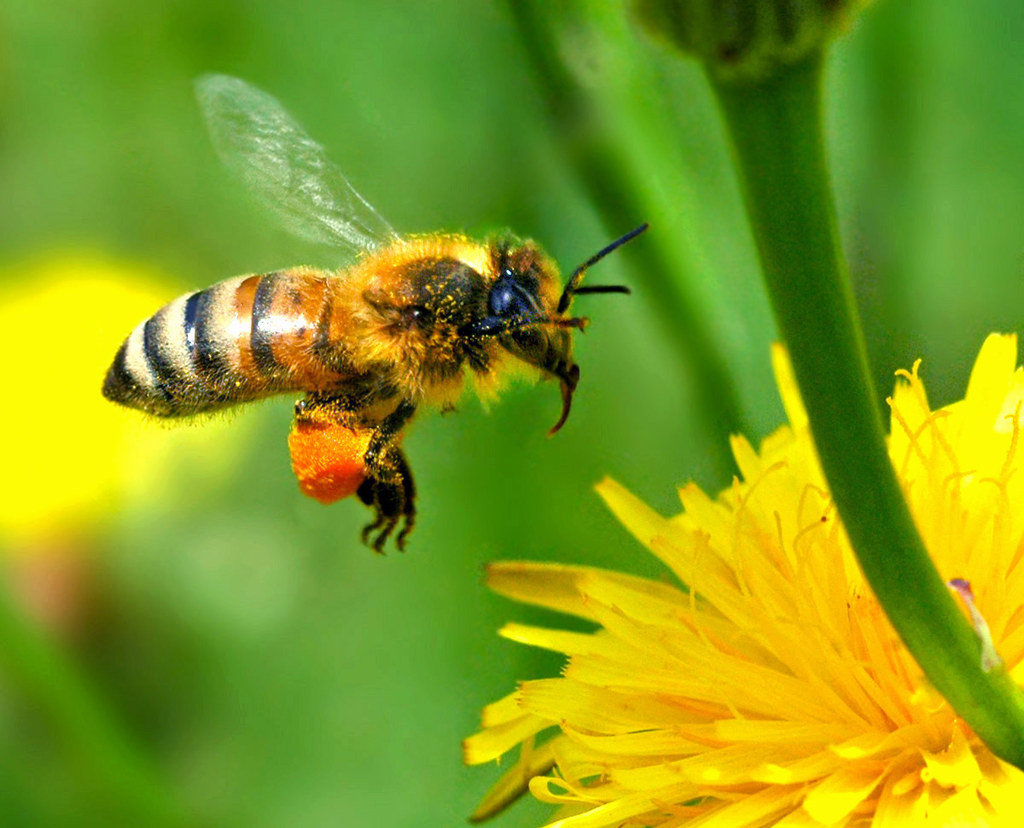


Honey bees
The Plant Protection Research Institute (PPRI) of the Agricultural Research Council (ARC) has recently been surveying honeybee colonies and retail honey in South Africa for the presence of American Foul Brood (AFB), an extremely serious brood disease of honeybees, as a project for the national Department of Agriculture (DoA).
This disease, caused by the spore-forming bacterium Paenibacillus larvae, has thus far never been reported in sub-Saharan Africa. In other parts of the world AFB has caused large scale colony losses and as it is extremely contagious and very difficult to eradicate, has been the subject of extensive eradication and control programmes. This is the major reason why honey and other honeybee products entering South Africa are required by law to be irradiated, in an effort to prevent the disease from entering the local honeybee population.
Unfortunately, AFB has now been found in some colonies and apiaries in the Western Cape. At present it is not known exactly how serious or extensive the disease outbreak is, but there may be the potential for a full scale AFB outbreak in South Africa, so the Department of Agriculture may have to act accordingly and take the necessary precautionary measures to prevent this.
Accordingly, the Department of Agriculture will conduct an urgent yet extensive delimiting survey of the Western Cape to determine how widespread and widespread the AFB infection is and particularly, whether it is also present in the wild honeybee population. This survey will be conducted in collaboration with the ARC-PPRI, relevant Department of Agriculture role players and beekeepers.
Once the extent and distribution of the AFB presence is known, the Department of Agriculture in consultation with organized beekeeping and other stakeholders in SA will decide on the appropriate course of action to be followed.
As a contingency measure, beekeepers are strongly urged to adapt extreme precautionary measures so as to not spread the disease further and to prevent their apiaries from contracting the disease. This applies to all beekeepers in South Africa, but particularly those in the Western Cape.
The suggested measures are as follows:
Beekeepers who consider that their colonies are either infected with AFB or that colonies have shown any extreme foulbrood symptoms in the past six months, are urged to contact:
Typical symptoms of AFB are discoloured and sunken brood, with the diseased larvae or pupae forming a black or brown scale at the bottom of the cell, and with the diseased larvae having a muscous like (non-granular) texture and being extremely ropy, before it dries to form a hard scale. Entire brood frames can be affected, giving the frames a shotgun-like appearance, and badly infected colonies are likely to collapse and die.
The bacterium that causes AFB does not affect people and therefore is not a danger to human health. This is a disease of insects, specifically of honeybees. It kills off the young, developing, non-adult stages of honeybees (namely the bee larvae and pupae that are still sealed in the brood cells of the comb in the bee hive).
Enquiries:
Tsotso Sehoole
Tel: 012 319 7317
Cell: 083 265 8728
E-mail: [email protected]
Issued by: Department of Agriculture, Republic of South Africa
25 March 2009
OIE Terrestrial Animal Health Code chapter on American Foulbrood
OIE Reference Laboratory for American Foulbrood :
Dr Adriana M. Alippi
Laboratorio de Loque Americana de la Unidad de Bacteriología del Centro de Investigaciones en Fitopatología (CIDEFI)
calle 60 y 119 s/n c.c. 31, 1900 La Plata
ARGENTINA
Tel: (+54-221) 423.67.48 ext. 423 Fax: (+54-221) 425.23.46
Email: [email protected]
Email: [email protected]
honey bees
American foulbrood (c) pollinator/wikipedia


